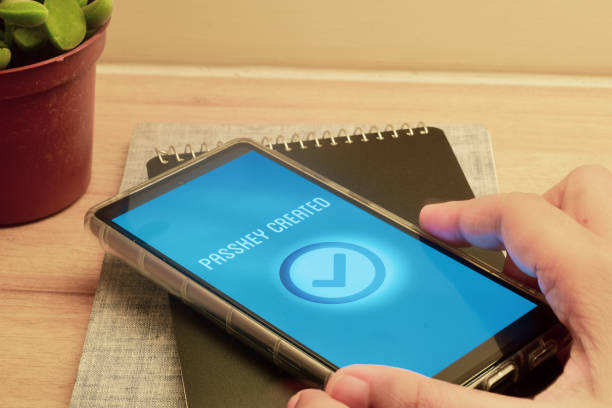Shutting down a mobile app is never an easy decision. Whether you’re facing low usage, shifting business priorities, or other reasons, it’s crucial to handle the process carefully. A poorly managed app shutdown can damage your reputation and alienate your users. To ensure that you close the app smoothly, here are 9 essential steps to help you prepare for shutting down your mobile app successfully.
1. Introduction: Why Shutting Down a Mobile App Requires Careful Planning
When preparing to shut down your mobile app, planning is essential. A mobile app’s user base has likely grown over time, and a sudden shutdown can leave them frustrated, confused, or even angry. It’s crucial to approach this transition in a structured and transparent manner to protect both your brand and your users’ trust. By carefully managing the closure, you can mitigate negative feedback and maintain a positive relationship with your users, even in the face of app discontinuation.
2. Communicate Clearly with Your Users
Clear and early communication is one of the most important steps in the app shutdown process. Here’s how to approach it:
Notify Users Early
You should start informing your users as soon as the decision to shut down the app is made. This allows them to adjust their expectations and start preparing. If users feel blindsided, they may leave negative feedback, affecting your reputation. Offering transparency in your communication will make the process smoother.
In-App Notifications
Use in-app notifications to directly inform your active users about the shutdown. These notifications should include the reason for the shutdown, the shutdown date, and the steps users need to take. It’s important to make this message clear and accessible within the app.
Email or Push Alerts
In addition to in-app notifications, send out emails or push notifications to all registered users. Be explicit about when the app will no longer be available, whether it’s a phased shutdown or a hard stop. Include any necessary instructions, such as how users can back up their data or cancel subscriptions.
3. Focus on Data Security and Backup Procedures
As you prepare to shut down your mobile app, data security becomes a top priority. Users expect to have control over their personal information, especially if your app stores sensitive data. Here’s how to manage data security during the shutdown:
Backup Options
Before completely shutting down the app, provide users with a way to back up or export their data. If your app involves any data storage (e.g., workout logs, progress tracking, or personal information), make sure users can easily retrieve it. Offering backup options, such as downloading data to a personal device or exporting it to cloud storage, ensures their information isn’t lost.
Data Deletion
In addition to providing backup options, make it clear how users can delete their data if they choose. Offer easy-to-follow instructions for those who prefer to remove their personal information before the app is gone. This is not just good practice—it’s also required by regulations like GDPR and CCPA.
Regulatory Compliance
Ensure that your app’s data deletion process complies with privacy laws and regulations such as GDPR, CCPA, or HIPAA. This not only helps protect users’ privacy but also minimizes your legal risk during the shutdown process.
4. Update Your App Store Listings
The next step is to update your app’s listings on the Google Play Store and the Apple App Store to reflect the upcoming shutdown:
Unpublishing the App
If you’re no longer accepting new users or want to prevent new downloads, unpublish the app from both app stores. This ensures that no one can download or install the app once the shutdown process begins. It’s also a sign that the app is no longer supported.
Revised App Description
Update the app description to communicate the shutdown details. This should include a clear message about the app’s closure, along with a timeline and the reason behind the decision. Transparency helps avoid confusion for potential users who might be interested in downloading the app.
User Reviews
Your app’s reviews will likely increase as the shutdown date approaches. Respond to these reviews, providing clear information about the shutdown process. This shows that you care about your users and are committed to supporting them until the final moment.
5. Prepare for an Increase in Support Requests
Shutting down an app will likely lead to an increase in support requests, as users will have questions or concerns. Here’s how to handle this surge:
Dedicated Support Channels
Set up a dedicated support channel to handle shutdown-related inquiries. You may need to create a specific email address or ticketing system just for this purpose. This ensures that issues related to the shutdown don’t get lost among regular support requests.
Trained Support Staff
Train your support team to handle questions about data backup, refunds, and alternative services. Ensure they are well-prepared to assist users with any issues that arise during the shutdown process.
Refunds and Adjustments
If your app is subscription-based or has paid features, be ready to handle refunds or prorated adjustments. Address refund requests promptly and clearly. Providing fair compensation for users who paid for services they won’t be able to use after the shutdown can prevent frustration and negative reviews.
6. Legal and Financial Considerations
There are several legal and financial factors to consider when shutting down an app:
Review Contracts and Agreements
Before proceeding with the shutdown, review any existing contracts with service providers, partners, or vendors. Ensure that all obligations are met, and notify any third-party services that might be impacted by the app’s closure.
Subscription and Payment Management
Make sure you’ve planned how to handle payments and subscriptions. If users have paid for a service, clearly communicate how and when they will be refunded. You may also need to stop accepting payments well before the final shutdown.
Inform Stakeholders
If your app was backed by investors, partners, or stakeholders, make sure they’re informed about the closure. This will help manage expectations and may be necessary for financial and legal purposes.
7. Transition the App in Phases
Shutting down the app in phases allows for a smoother transition for both your users and your team. A gradual shutdown helps users adjust to the upcoming changes without sudden disruptions:
Gradual Feature Removal
Begin by disabling non-essential features of the app, such as in-app purchases or new user registrations. This gives users time to transition before the full shutdown.
User Notifications
Throughout the shutdown process, keep users informed of any changes to the app’s functionality. This will help them adjust their expectations and make necessary adjustments to the routines or services they rely on.
Final Shutdown
Once users have had time to transition, the full shutdown can take place. Disable all features and remove access to the app. Ensure that users are well aware of the final closure date and know how to handle their remaining data.
8. Offer Alternatives or Transition Plans
Shutting down an app doesn’t necessarily mean leaving your users without options. Offering alternatives or transition plans can ease the process for your users:
Provide Recommendations
Offer users a list of alternative apps or services that fulfill similar needs. By pointing them toward alternatives, you show that you still care about their needs, even though the app is being shut down.
Partner with Competitors
If appropriate, consider forming partnerships with competitors or other services that offer similar features. This can provide a smoother transition for your users while maintaining a relationship with them.
9. Post-Shutdown Support and Reflection
Once the app has been fully shut down, the process isn’t over. You should continue to provide support and reflect on the shutdown:
Ongoing Support
Offer continued support for a limited period after the shutdown. This allows users to address any lingering questions, resolve final issues, and ensure their data has been properly handled.
Final Announcement
Send a final communication to thank users for their support during the life of the app. Let them know that the app will no longer be updated or available and provide any final instructions if needed.
Evaluate and Learn
After the shutdown, take the time to reflect on the entire process. What went well? What could be improved? Learning from this experience can help you avoid issues in future app launches or closures.
Conclusion
Successfully shutting down a mobile app requires careful planning and thoughtful execution. By following these 9 essential steps, you’ll ensure a smooth transition for both your users and your business. Clear communication, secure data management, and a gradual transition plan are key to maintaining your reputation and keeping users satisfied—even when closing an app.











